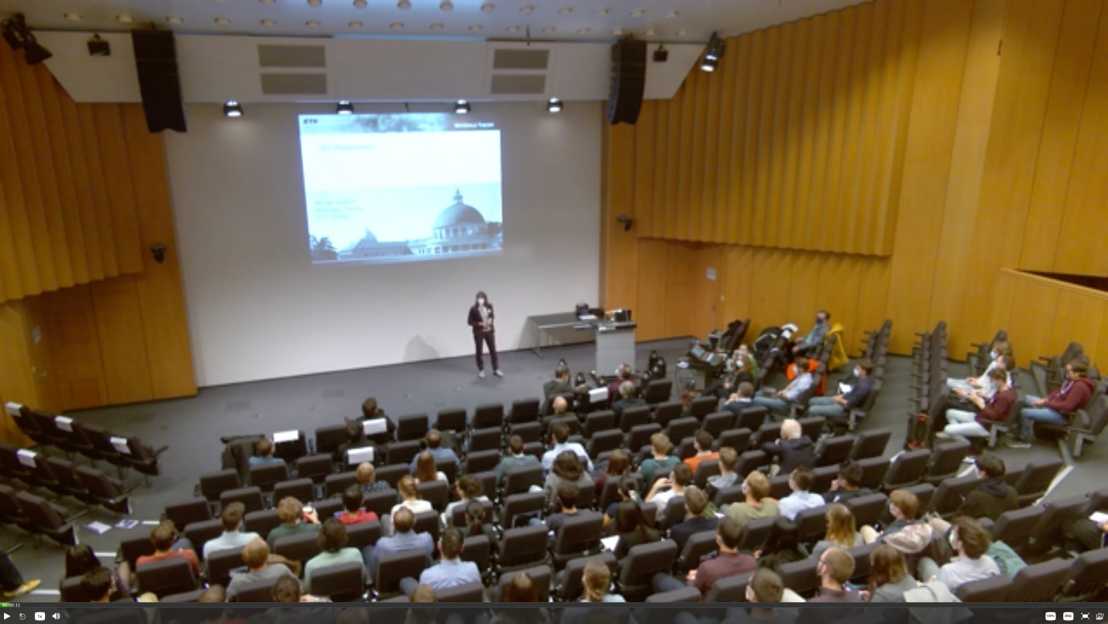Materials Day 2021 – Materials Today, Tomorrow, and Beyond
Impressions
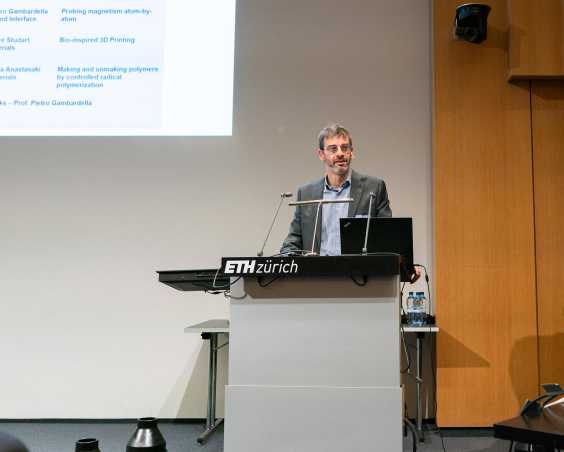 Prof. Dr. Nicola Spaldin: On Happiness?
Prof. Dr. Nicola Spaldin: On Happiness?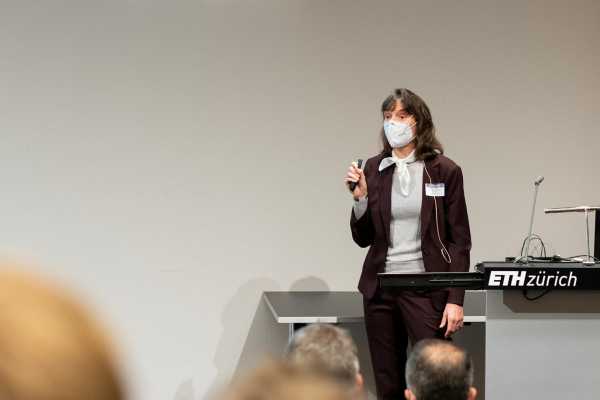 Chairman Prof. Dr. Eric Dufresne
Chairman Prof. Dr. Eric Dufresne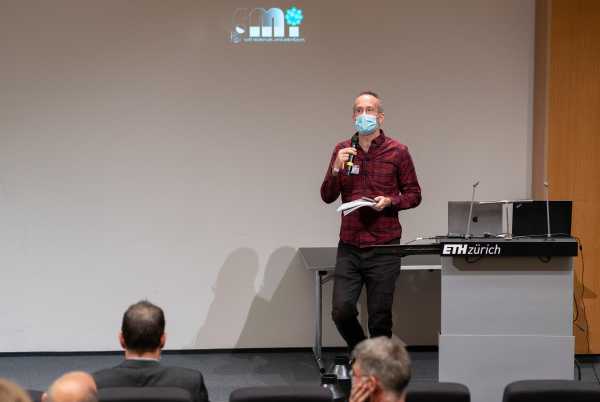 Prof. Dr. Lucio Isa: Harnessing softness in micro-structured materials
Prof. Dr. Lucio Isa: Harnessing softness in micro-structured materials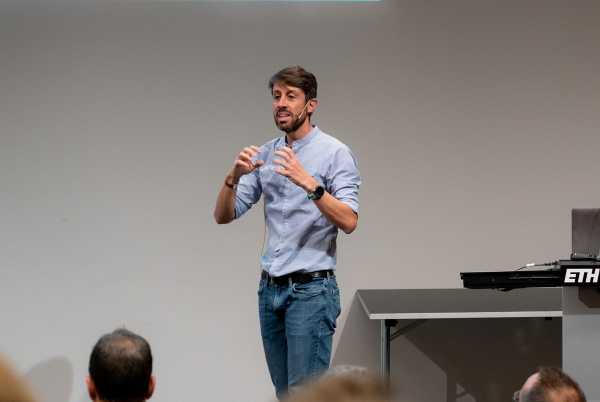 Prof. Dr. Ralph Spolenak: Short Stories from the Small and how they Apply to the Big World
Prof. Dr. Ralph Spolenak: Short Stories from the Small and how they Apply to the Big World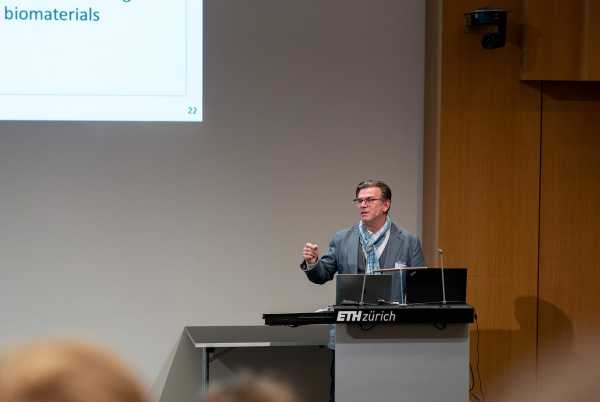 Prof. Dr. Jan Vermant: Materials science in sneezing, coughing and generating aerosols
Prof. Dr. Jan Vermant: Materials science in sneezing, coughing and generating aerosols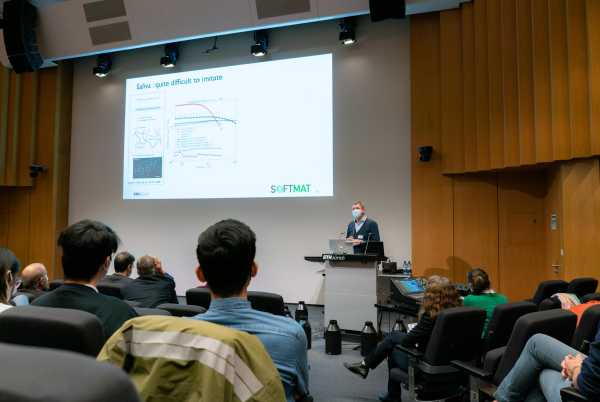 Prof. Dr. Manfred Fiebig: Seeing is believing: materials and optics
Prof. Dr. Manfred Fiebig: Seeing is believing: materials and optics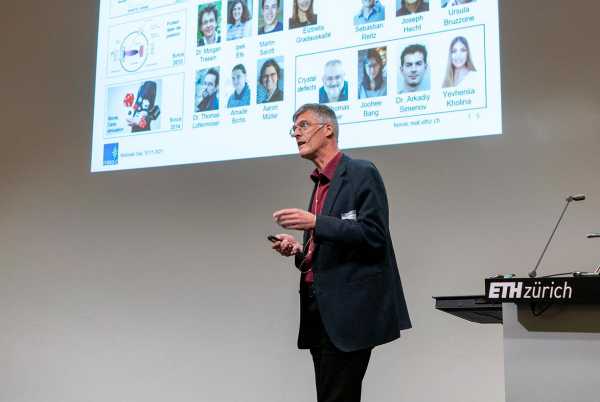 Prof. Fr. Pietro Gambardella introducing Materials Research Prize for Young Investigators winner Prof. Sheng Xu, UC Dan Diego
Prof. Fr. Pietro Gambardella introducing Materials Research Prize for Young Investigators winner Prof. Sheng Xu, UC Dan Diego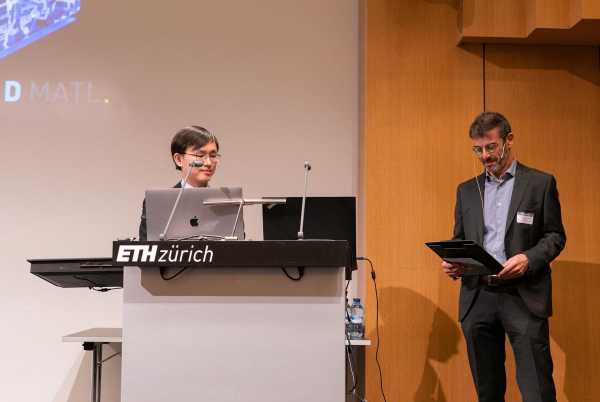 Young Investigator Lecture by Prof. Sheng Xu Materials: Design and Advanced Microfabrication for Soft Electronics
Young Investigator Lecture by Prof. Sheng Xu Materials: Design and Advanced Microfabrication for Soft Electronics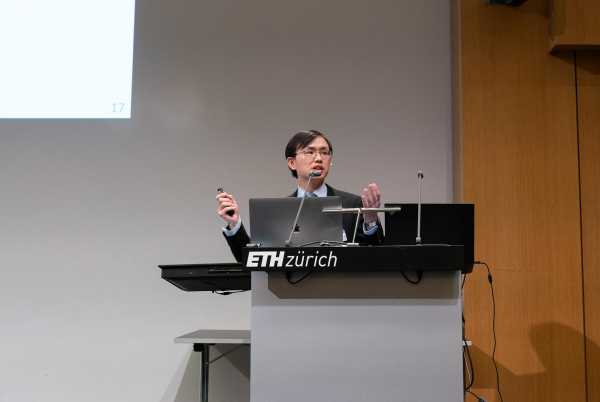 Award Ceremony
Award Ceremony Award Ceremony
Award Ceremony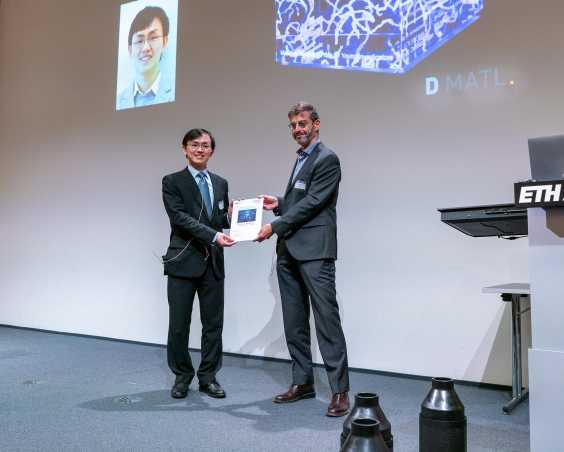 Award Ceremony
Award Ceremony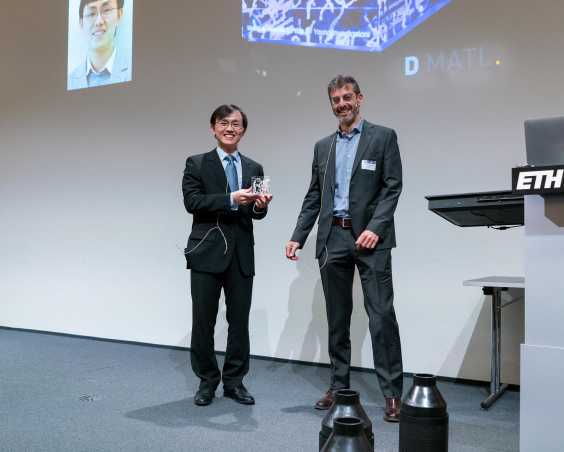 Award Ceremony (from left to right): Prof. Manfred Fiebig and Prof. Eric Dufresne (comittee), Prof. Sheng Xu (prize winner), Prof. Pietro Gambardella (head of the department)
Award Ceremony (from left to right): Prof. Manfred Fiebig and Prof. Eric Dufresne (comittee), Prof. Sheng Xu (prize winner), Prof. Pietro Gambardella (head of the department)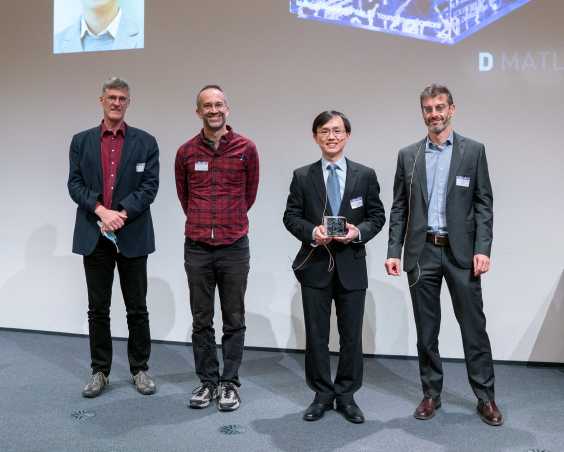 Prof. Dr. Markus Niederberger: Invisible materials and devices for energy storage and conversion
Prof. Dr. Markus Niederberger: Invisible materials and devices for energy storage and conversion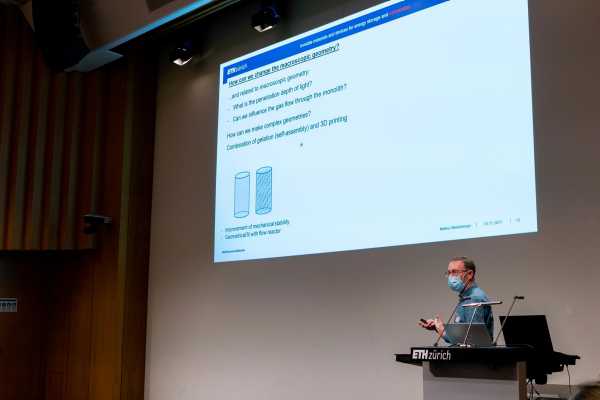 Prof. Dr. Jörg Löffler: New metallic materials: From the atom to a viable product
Prof. Dr. Jörg Löffler: New metallic materials: From the atom to a viable product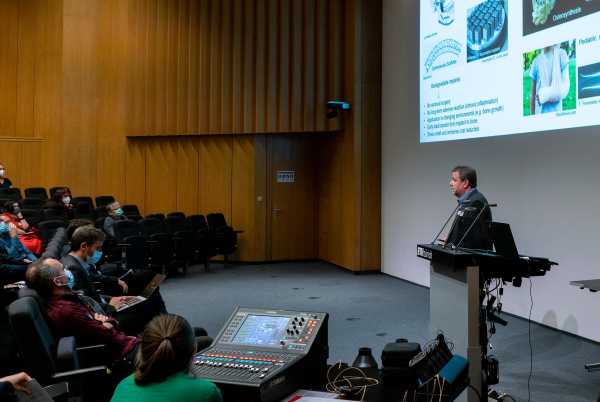 Prof. Dr. Hans Christian Öttinger: Learning from fluctuations in rheology
Prof. Dr. Hans Christian Öttinger: Learning from fluctuations in rheology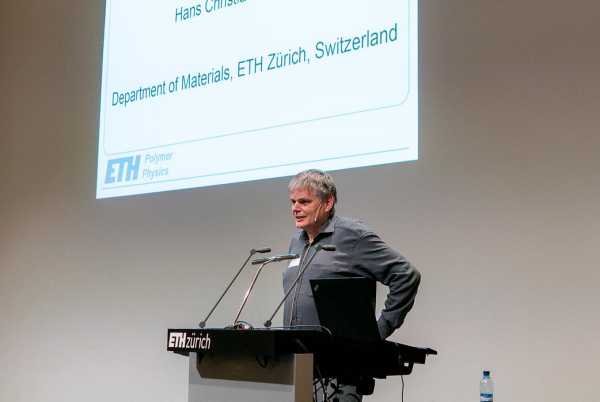 Prof. Dr. Eric Dufresne: Living Droplets Get to Work
Prof. Dr. Eric Dufresne: Living Droplets Get to Work Prof. Dr. Pietro Gambardella: Probing magnetism atom-by-atom
Prof. Dr. Pietro Gambardella: Probing magnetism atom-by-atom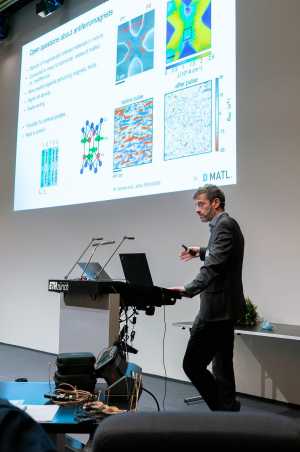 Prof. Dr. André Studart: Bio-inspired 3D Printing
Prof. Dr. André Studart: Bio-inspired 3D Printing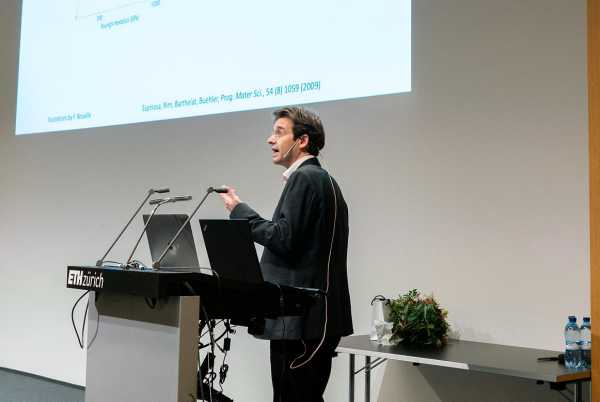 Prof. Dr. Athina Anastasaki: Making and unmaking polymers by controlled radical polymerization
Prof. Dr. Athina Anastasaki: Making and unmaking polymers by controlled radical polymerization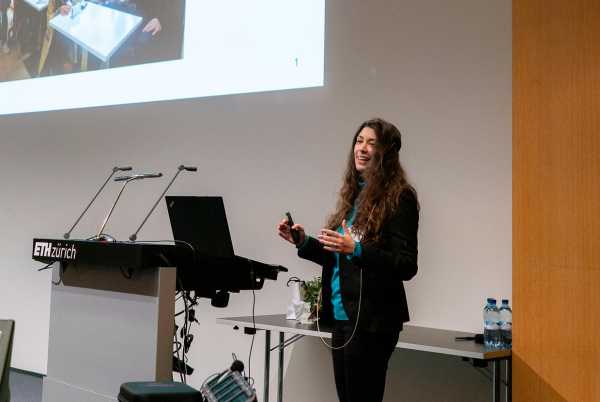 Prof. Pietro Gambardella: Closing Remarks
Prof. Pietro Gambardella: Closing Remarks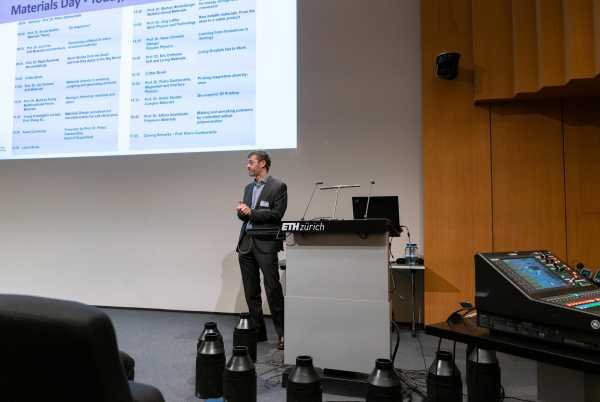 Prof. Pietro Gambardella: A special thank you for Claudia Sigel for organizing the Materials Day
Prof. Pietro Gambardella: A special thank you for Claudia Sigel for organizing the Materials Day Audience
Audience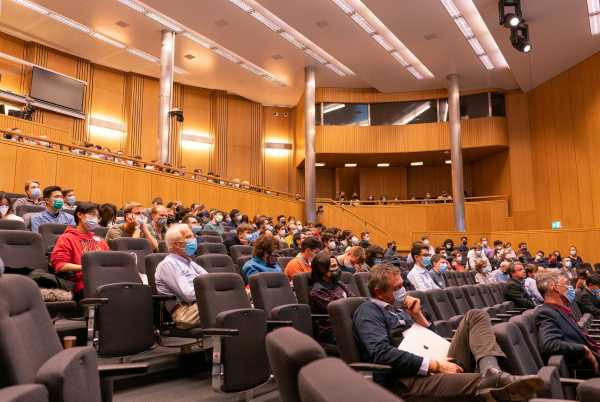
all images Copyright Maria Feofilova/ETH Zurich
A recording of the event is available at the video portal of the ETH.
Introduction
Materials Day
Developing materials is essential to addressing the grand technological challenges of the XXIst century. Without new materials and processes, advances in areas that we take for granted, ranging from biomedicine to telecommunications, energy storage, and manufacturing of complex structures will either not happen or not be sustainable.
Materials Day is an opportunity to get to know the most advanced research directions in the Department of Materials at ETH Zürich in a one-day symposium, which includes talks, Young Investigator Award and as well as opportunities for convivial discussions over coffee break.
The Symposium “Materials Day” is organized biannually by the Department of Materials at ETH Zurich to bring together faculty, researchers and students with representatives from industry and the media. Previous Materials Days
Department of Materials
The Department of Materials carries out fundamental and applied research in a wide variety of areas of materials science. We investigate different forms of matter, including advanced metal alloys, polymer-metal nanocomposites, complex fluids, soft-condensed biopolymers, functional surfaces, hybrid ceramics and magnetoelectronic materials. Approaches vary from synthesis to experimental studies and processing to theoretical work and large-scale simulation efforts.
The Competence Center for Materials and Processes
The Competence Center for Materials and Processing (MaP) is the multidisciplinary network of ETH Zurich researchers and is dedicated to tackling the grand challenges in Materials and Processes. We promote cross-disciplinary research, education and outreach to industry, academy and society.
Materials Research Prize for Young Investigators
The ETH Materials Research Prize for Young Investigators recognizes outstanding contributions of young investigators that advance materials, from fundamental to applied research. These contributions could include, for example: the discovery of new classes of materials, the observation of novel phenomena leading to either fundamentally new applications or insights, and work that substantially impacts our understanding or applications of existing materials and phenomena. The prize consists of CHF 10,000, a certificate citing the contribution of the recipient, and an allowance for travel to the ETH Materials Day at which the award is presented together with a keynote address by the prizewinner. The Materials Day is a biannual celebration at which the ETH Department of Materials presents its Research to Swiss academia, industry, and the public.
Establishment & Support
The prize has been established in order to emphasize the fundamental role young researchers play in advancing materials science, spanning fundamental and applied research. It is endowed by the ETH Department of Materials and will be awarded biannually.
Rules & Eligibility
The prize is open to scientists of all nationalities irrespective of where their work has been carried out. It is recommended that nominations are restricted to one per institution. To be eligible for the prize, the researcher should be an assistant professor (or an equivalent form of independent researcher) at the time of nomination.
Nomination & Selection Process
For the nomination, please send the following to the Head of Department, Prof. Pietro Gambardella, at .
- A letter of not more than two pages evaluating the qualifications of the nominee.
- A biographical sketch, including publication list.
- A list of the up to five most important publications.
- Two seconding letters by individuals not connected to the nominee through advising relationships.
The selection will be conducted by three tenured professors of the Department of Materials and the Head of Department.
Prize Winner
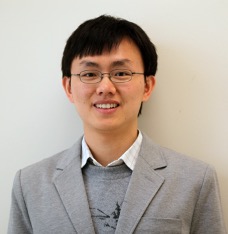
Prof. Sheng Xu, University of California San Diego, 2021
Prof. Xu has made important contributions to the field of flexible electronics. Most recently, he invented a wearable ultrasonic technology that allows noninvasive monitoring of tissue far below the skin surface. He also developed new growth methods for materials used in flexible high-performance electronics.
